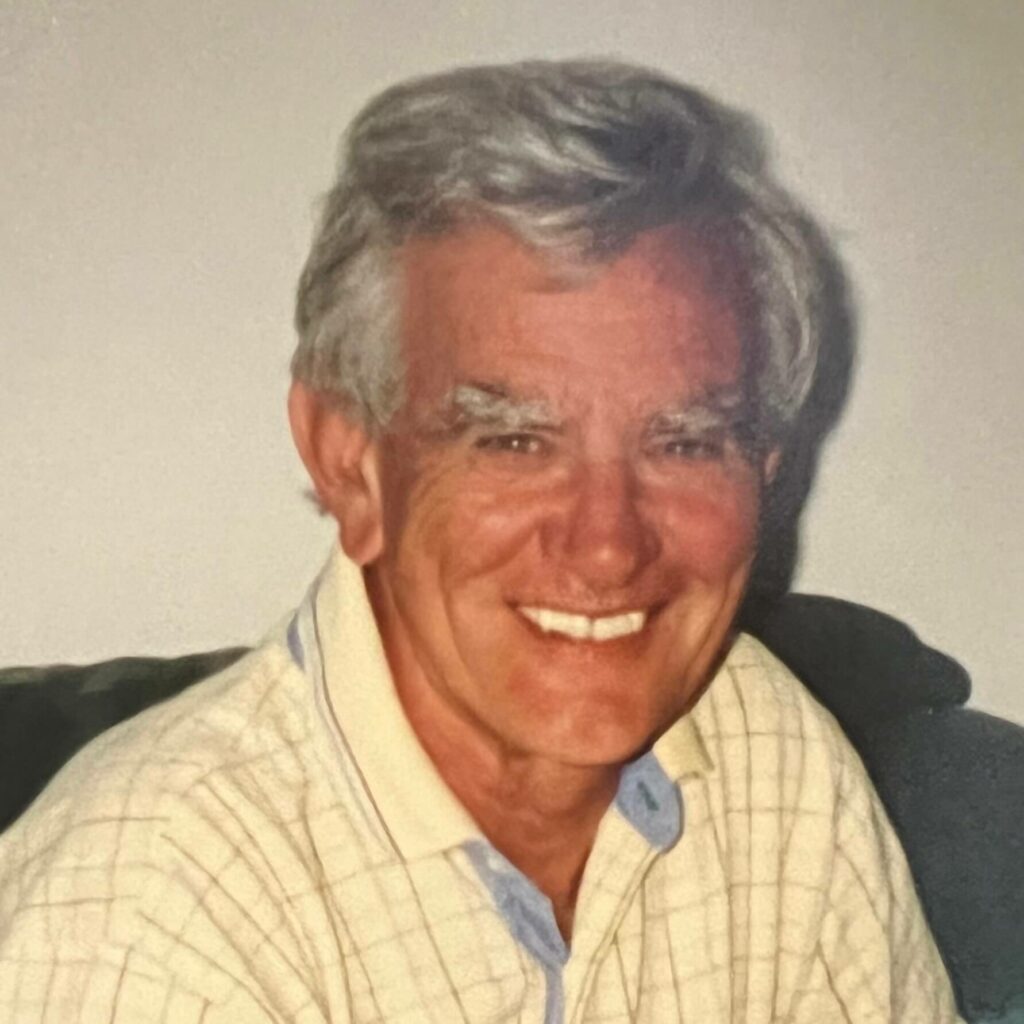Dr. Barrington James Vickery
July 31, 1936 – December 1, 2023
Sydney, NSW, Australia – London, ON, Canada
In his 88th year, Barry James Vickery died peacefully in his sleep Friday at Oakcrossing Long-Term Care.
Barry was an internationally respected wind engineer, one of the pioneers in a field which is now taught at many universities throughout the world. He began his career as a Lecturer at The University of Sydney and then went on sabbatical in 1964, taking his wife Evelyn and their two children to England for a year, to work at the National Physics Laboratory in Teddington, England (near London). During that time, he had the opportunity to perform wind tunnel tests on the then-proposed World Trade Center Towers in New York.
The family returned to Australia in 1965, and then moved again in 1966, this time with three children, from Sydney to London, Ontario. Here, Barry joined The University of Western Ontario (UWO) as an Assistant Professor where, alongside Dr. Alan Davenport, he performed pioneering research examining the effects of strong winds on structures. During this time, he completed his doctoral work and was awarded his Ph.D. in 1968. While at UWO, he performed the wind tunnel tests on Centrepoint Tower to be built in Sydney.
He returned to the University of Sydney in 1971 as a Senior Lecturer, this time with four children in tow. While back in Sydney, he started his pioneering work into the effects of winds on chimneys, becoming the world leading expert in chimney aerodynamics. It was here, with one of his graduate students, that it was realized that, in the field of wind climatology, different windstorms need to be treated separately. They did this work in 1976 but it wasn’t until 2016 that their approach was adopted as a requirement for all wind designs and the development of design wind speeds in the United States. One of his areas of interest was wind loading on industrial chimneys and stacks. His seminal work is widely cited and forms the main basis of industrial chimney building codes in the United States, Canada and internationally, where he served on expert committees for decades. Beyond his scholarly work, Barry was widely sought as a consultant. Among his many engagements, he was involved in the design of more than 25 power plants that were retrofitted in response to environmental protection legislation against the effects of acid rain.
In 1976, the Vickery family (still with only the four children), made the trek again across the Pacific, back to The University of Western Ontario where he was now a Full Professor, and where he remained until the end of his career. Here, at The Boundary Layer Wind Tunnel Laboratory, he had the opportunity to work on some of the world’s most complex structures. He was always the one at the wind tunnel to be sought out to work on these projects. He had the privilege to work on some Santiago Calatrava projects, including the Oculus in New York. He was a brilliant engineer who could simplify the most complex problem in order to make them tractable. One of his long-time colleagues described him as “the cleverest man he had ever met”.
Besides being an incredibly talented engineer and professor, Barry was an avid golfer, a world traveller, a fun addition to any social gathering, and was known to enjoy surf fishing and flying kites on the beach.
Barry is survived by his wife of 65 years, Evelyn Williams Vickery, and children Peter (Kate), Anita (Scott) Jones, Susan, and Nicole (Steve) Cox. Also survived by nine grandchildren—Sarah, David, Caroline, Andrew, Lora, Ben, Egan, Taylor, and Miranda—as well as seven great grandchildren. He was predeceased by his parents, James and Beryl Molyneux Vickery, and his treasured sister, Barbara Vickery Norris, all of Australia.
There is no service being planned at this time, but a gathering to celebrate his life will take place next summer.
The family wishes to thank the wonderful care givers at Oakcrossing Long-Term Care. If you wish to honour Barry, please consider a donation to Alzheimer Society of Canada.
“To live in hearts we leave behind is not to die.”


